Making the switch to a ketogenic diet can feel overwhelming at first, especially when it comes to grocery shopping. With thousands of food products vying for attention and endless diet advice online, knowing what to buy, what to avoid, and how to build a nutrient-dense keto grocery list becomes essential. While the ketogenic diet has gained widespread popularity for its weight loss potential, the benefits go far beyond aesthetics. A well-formulated keto diet supports improved metabolic health, mental clarity, and sustained energy levels—all of which begin with making informed food choices.
For anyone embarking on this nutritional path, crafting an expert-approved keto diet grocery list is more than a checklist—it’s a strategy for success. A purposeful keto grocery shopping list acts as your nutritional compass, steering you toward foods that keep you in ketosis while providing essential micronutrients and variety. Done right, the ketogenic diet becomes sustainable, enjoyable, and compatible with long-term wellness. This article offers an in-depth, medically accurate, and engaging guide to creating a smart, science-backed keto diet shopping list that aligns with both your health goals and your lifestyle.
You may also like: Is the Keto Diet Safe or Dangerous? What Experts Say About the Risks, Benefits, and Basics of the Ketogenic Diet
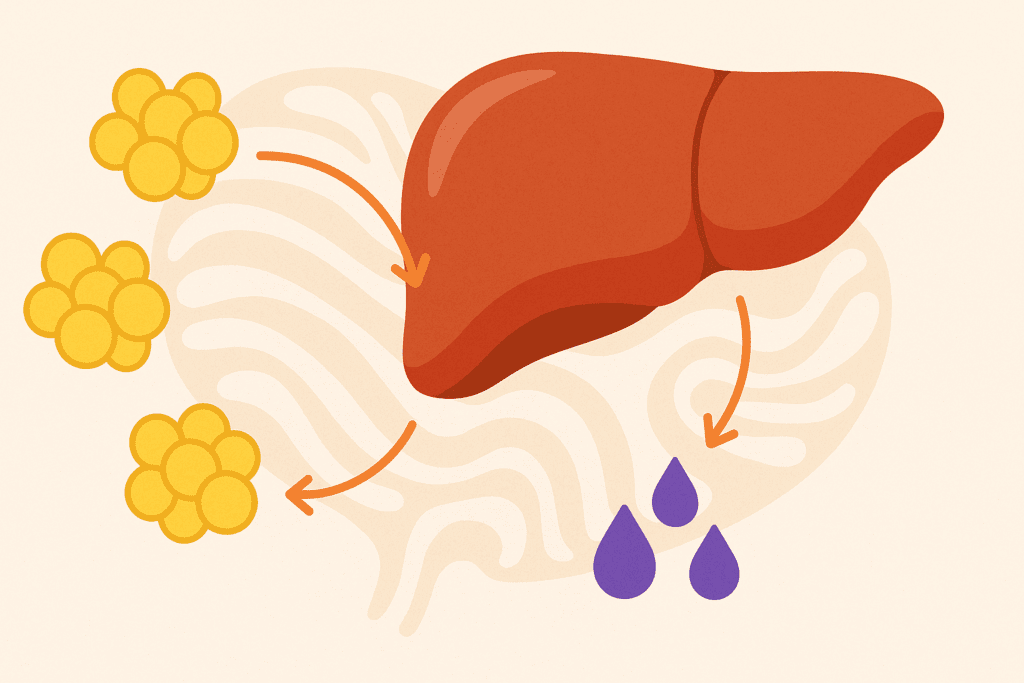
Understanding the Foundation of a Ketogenic Diet
The ketogenic diet, often shortened to keto, is a high-fat, very low-carbohydrate, and moderate-protein dietary pattern. It works by shifting the body’s primary energy source from glucose to ketones, molecules produced by the liver from fat when carbohydrate intake is restricted. For this metabolic shift, known as ketosis, to occur effectively, one must reduce net carbohydrate intake to approximately 20 to 50 grams per day, depending on individual metabolic needs and activity levels.
What makes the ketogenic diet effective is not simply avoiding bread or sugar, but rather embracing a deliberate structure in food choices. The keto food shopping list should prioritize healthy fats like avocados, olive oil, and fatty fish while moderating protein sources such as grass-fed beef and pastured poultry. Simultaneously, it should exclude high-glycemic foods including most fruits, grains, legumes, and processed snacks that disrupt ketosis. Selecting the right foods ensures nutrient adequacy, metabolic balance, and enhanced fat adaptation, especially during the first critical weeks.
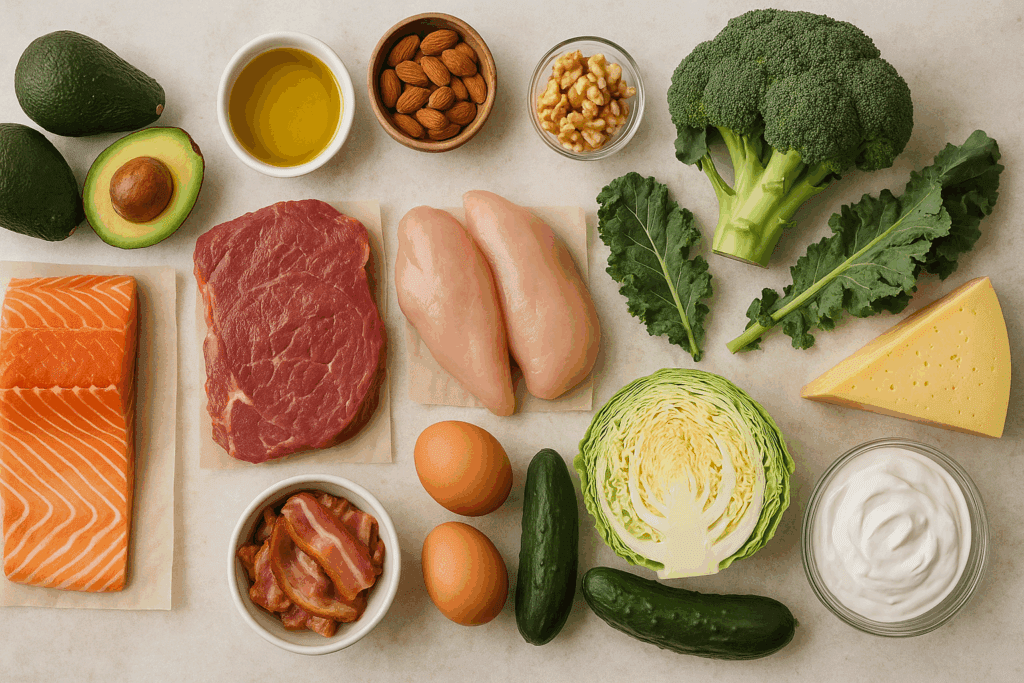
Key Components of a Smart Keto Grocery Shopping List
The success of a keto lifestyle often depends on the strength of your planning. Without a structured keto grocery list, it becomes all too easy to grab carb-laden convenience foods in moments of hunger or fatigue. Therefore, your ketogenic diet grocery list should reflect both variety and nutritional density, emphasizing real, whole foods over packaged low-carb substitutes.
Healthy fats should anchor your list. These include extra virgin olive oil, coconut oil, grass-fed butter, ghee, and animal-based fats such as lard and duck fat. Fatty cuts of meat, oily fish like salmon and mackerel, avocado, and full-fat dairy like heavy cream and hard cheeses also belong here. Each of these foods supports the high-fat macronutrient structure necessary for ketosis.
Proteins should be thoughtfully selected to prevent overconsumption, which can lead to gluconeogenesis—a process where the body converts excess protein into glucose, potentially knocking you out of ketosis. Opt for quality over quantity: pastured eggs, organic chicken thighs, grass-fed beef, and wild-caught fish offer both protein and valuable micronutrients.
Non-starchy vegetables such as leafy greens, cauliflower, zucchini, mushrooms, and bell peppers are essential for fiber, vitamins, and antioxidants. While the keto diet is low in carbs, it should not be void of vegetables. These foods add bulk and variety without spiking blood sugar, supporting digestive health and inflammation control.
Dairy products should be used selectively and ideally sourced from high-quality, grass-fed origins. Cheddar, cream cheese, sour cream, and Greek yogurt (in moderation) can be part of your keto diet grocery list. Look for products with minimal additives and low net carbohydrates.
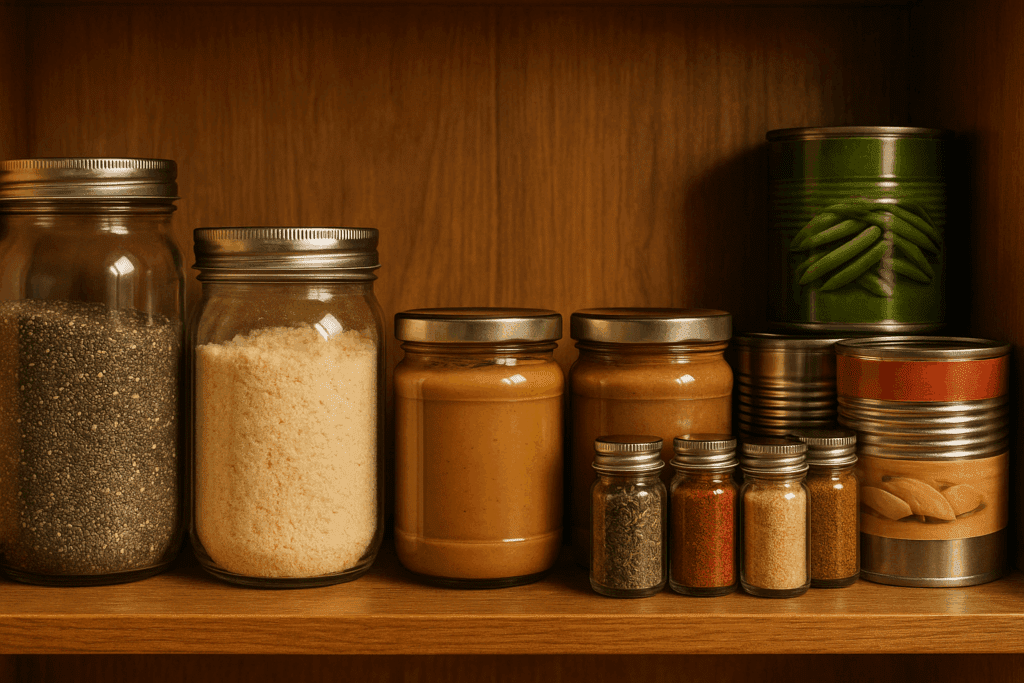
Keto-Friendly Pantry Staples to Always Have on Hand
A smart keto grocery shopping list goes beyond perishables. Stocking your pantry with low-carb essentials ensures you always have the right ingredients to cook nutritious meals, even on busy days. These pantry staples can include almond flour, coconut flour, chia seeds, flaxseeds, psyllium husk, and low-carb baking powder. These ingredients allow for keto-friendly versions of traditionally carb-heavy foods like bread, pancakes, and desserts.
Nut butters such as almond butter or macadamia nut butter offer a convenient way to boost fat intake and pair well with low-carb vegetables or keto smoothies. Be cautious with peanut butter, as it can contain added sugars and inflammatory oils. Choose varieties with no added sugars and minimal ingredients.
For added flavor and variety, your keto food grocery list should include herbs, spices, and condiments that do not contain added sugars. Mustard, apple cider vinegar, hot sauce, and low-carb mayonnaise can elevate simple meals. Read labels carefully, as many sauces and dressings contain hidden sugars or starches.
Canned and jarred items can be lifesavers in a pinch. Olives, pickles (without sugar), coconut milk, and sardines offer convenience and nutritional benefits. Be sure to verify that these items do not contain fillers, preservatives, or sweeteners that can add unwanted carbs.
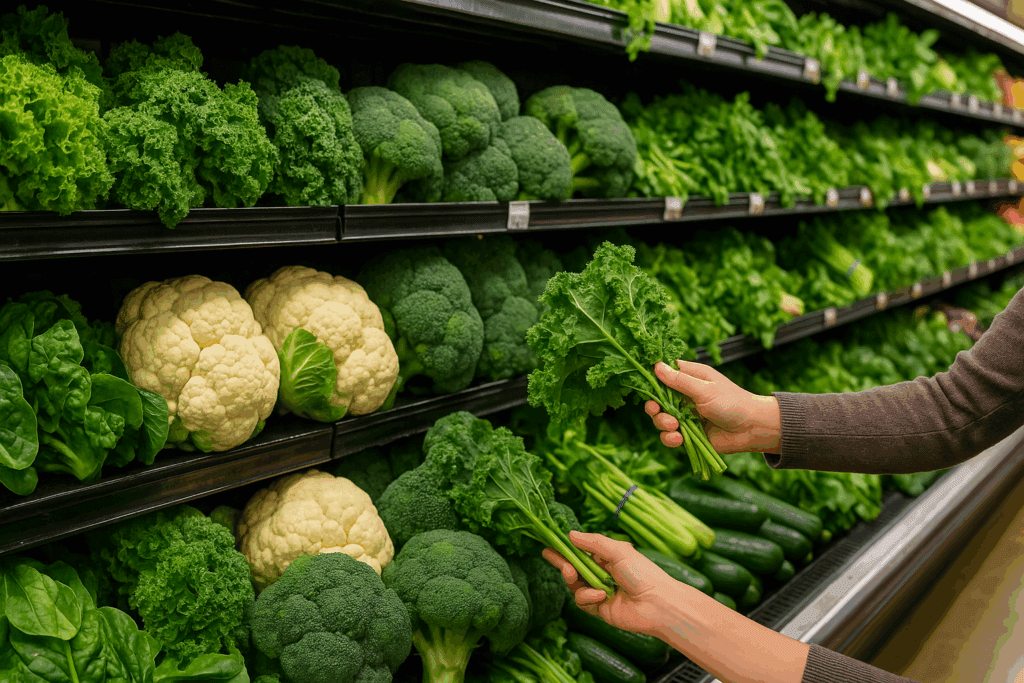
Smart Keto Shopping in the Produce Aisle
While meat and fats often take center stage in a keto grocery list, the produce aisle offers immense value for those following this lifestyle. Choosing the right vegetables and avoiding carb traps is essential for sustaining ketosis without sacrificing dietary diversity. Prioritize non-starchy vegetables like spinach, kale, arugula, collard greens, and romaine lettuce—each is low in net carbs and rich in essential micronutrients.
Cruciferous vegetables such as broccoli, cauliflower, cabbage, and Brussels sprouts offer anti-inflammatory properties and gut health support, making them a must-have on your keto diet shopping list. These vegetables can be enjoyed roasted, steamed, or even riced for creative, low-carb alternatives to grains.
Avoid high-carb vegetables like carrots, corn, peas, and potatoes, which can raise blood glucose levels and interfere with ketosis. When shopping for vegetables, focus on color and texture. Bright, fibrous vegetables typically signal low sugar content and high nutrient density, aligning with the goals of a well-rounded ketogenic diet grocery list.
Berries can be included in small amounts due to their lower glycemic impact compared to other fruits. Raspberries, blackberries, and strawberries contain fiber and antioxidants and can be enjoyed sparingly. However, avoid bananas, apples, and tropical fruits, which are too high in sugar for a typical keto protocol.
Crafting a Sustainable Keto Meal Plan from Your Grocery List
A strategic keto grocery shopping list is only as useful as its application. To maintain nutritional balance and avoid burnout, use your list to create a flexible weekly meal plan. Start with cornerstone meals like eggs with avocado for breakfast, grilled salmon with sautéed spinach for lunch, and a zucchini noodle alfredo for dinner. Each of these meals is high in fat, moderate in protein, and low in carbs.
To prevent decision fatigue, batch cooking and meal prepping can simplify weekday eating. Prepare a large portion of roasted vegetables, grilled meats, and boiled eggs during the weekend so you always have keto-compliant options at the ready. Having a stocked pantry and freezer with items from your keto diet grocery shopping list ensures you’re never unprepared.
Variety is crucial. Rotate your proteins, vegetables, and fats weekly to prevent micronutrient deficiencies. Consider cycling different types of leafy greens or experimenting with spices and sauces to keep meals interesting. A sustainable keto lifestyle relies on food enjoyment just as much as macronutrient balance.

Expert Tips for Budget-Friendly Keto Grocery Shopping
It’s a myth that keto must be expensive. With careful planning, a keto food shopping list can be both health-conscious and wallet-friendly. Buying in bulk, especially when it comes to meats, nuts, and oils, reduces cost per serving and minimizes frequent trips to the store. Look for sales and consider joining warehouse clubs for access to larger quantities of keto staples.
Seasonal vegetables not only taste better but are typically more affordable. When in doubt, frozen vegetables are a great substitute and often retain their nutrient content. Many stores now carry store-brand versions of keto-friendly items like almond flour, coconut oil, and cheese, offering quality options at a lower price point.
Meal planning around your existing pantry inventory is another cost-saving strategy. Review your current stock and create a weekly keto diet shopping list based on what you already have. This prevents overbuying and reduces food waste while helping you stay aligned with your ketogenic goals.
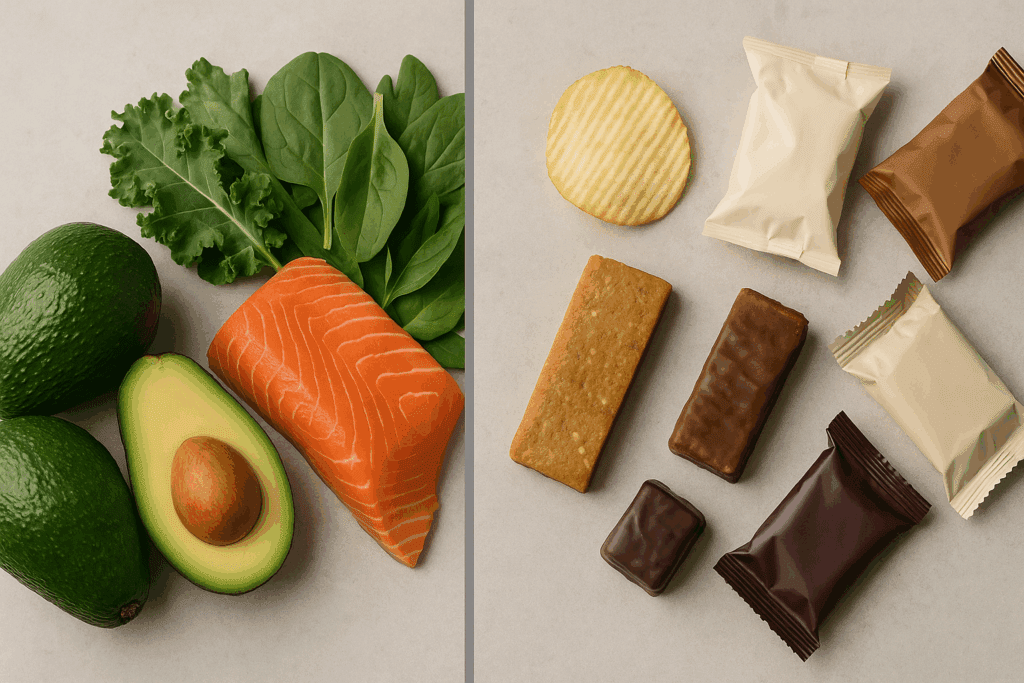
How to Avoid Common Mistakes When Building a Keto Grocery List
Even seasoned keto followers can fall into traps at the grocery store. One common pitfall is relying too heavily on processed low-carb products that market themselves as “keto” without providing real nutritional value. Many of these products contain sugar alcohols, hidden starches, and inflammatory oils that undermine the benefits of a clean ketogenic diet.
Another mistake is underestimating the role of fiber. While fiber doesn’t count toward net carbs, it is essential for gut health and metabolic regulation. Incorporating fiber-rich foods like flaxseed, chia seeds, and leafy greens into your keto grocery shopping list supports digestion and keeps you feeling full.
Mismanaging electrolytes is another frequently overlooked issue. The ketogenic diet induces diuresis, leading to the loss of key minerals such as sodium, potassium, and magnesium. Include sources of these electrolytes on your grocery list, such as bone broth, leafy greens, avocados, and salted nuts. Supplementation may be necessary, especially in the early adaptation phase.
Navigating the Keto Grocery Store Experience with Confidence
Going into the grocery store without a list can feel like entering a maze with no map. By contrast, bringing a tailored keto diet grocery shopping list ensures efficiency and clarity. Start your trip in the perimeter of the store where fresh foods are usually located. The produce, meat, and dairy sections offer the bulk of what you need for a clean, whole-food-based ketogenic diet.
Avoid the snack aisles unless you’re searching for very specific, pre-researched keto-friendly items. While more brands are offering low-carb snacks, not all are created equal. It’s important to read labels carefully and prioritize whole ingredients over fillers and marketing claims. Keto bread, for example, might contain wheat starch or maltodextrin, which can interfere with ketosis.
Shopping online for keto products can also streamline the experience. Specialty sites and grocery delivery services often offer comprehensive search tools that help you filter products by carbohydrate content, ingredients, and dietary labels. This method can be especially helpful for sourcing hard-to-find items on your ketogenic diet grocery list.
Why a Well-Constructed Keto Diet Grocery List Supports Long-Term Health
A strategic, evidence-based keto grocery list does more than keep you in ketosis. It lays the foundation for long-term dietary success by promoting satiety, supporting mental clarity, and minimizing nutrient deficiencies. With the right ingredients on hand, you’re far more likely to cook at home, avoid blood sugar spikes, and make health-conscious decisions under pressure.
Many people experience renewed energy, clearer thinking, and reduced hunger on a properly implemented keto diet. These benefits are made possible not just by macros, but by the micronutrients and food quality reflected in your grocery selections. Whole-food fats, pasture-raised proteins, and fresh produce all contribute to the anti-inflammatory and neuroprotective aspects of the ketogenic diet.
Furthermore, developing fluency in keto grocery shopping empowers you to advocate for your own health. It enables you to scrutinize food labels, navigate restaurants with confidence, and maintain dietary consistency even while traveling or during holidays. This level of preparation transforms keto from a short-term diet to a sustainable wellness practice.
Frequently Asked Questions: Smart Keto Grocery Shopping and the Ketogenic Diet
1. How can I personalize a keto shopping list to accommodate food allergies or sensitivities? Creating a personalized keto shopping list for those with allergies or sensitivities involves carefully reading ingredient labels and focusing on whole, minimally processed foods. If you’re allergic to common keto staples like dairy, nuts, or eggs, alternatives are available. For dairy, consider coconut cream or almond-based alternatives that offer similar fat content. If nuts are an issue, seeds such as sunflower or pumpkin seeds can be used in place of almond flour or nut butters. With a bit of creativity, you can craft a keto diet grocery list that suits your specific needs without compromising nutritional quality or your ability to stay in ketosis.
2. What role does food quality play in the effectiveness of a ketogenic diet grocery list? Food quality can significantly influence how your body responds to a ketogenic diet. Grass-fed, pasture-raised, and wild-caught options tend to be richer in omega-3 fatty acids and have lower levels of inflammatory compounds compared to conventionally raised counterparts. When assembling your ketogenic diet grocery list, prioritizing organic produce and clean protein sources can enhance the anti-inflammatory benefits of keto. Choosing extra virgin olive oil over refined seed oils, for example, helps maintain cellular health and supports fat metabolism. A nutrient-dense keto grocery list does more than keep carbs low—it supports your overall well-being.
3. How can social settings and travel affect my adherence to a keto grocery shopping list? Maintaining keto while traveling or in social situations can be challenging without preparation. One strategy is to bring travel-friendly items from your keto food shopping list, such as beef jerky, macadamia nuts, or single-serve packets of MCT oil. When dining out, reviewing menus in advance and opting for meat-and-vegetable combinations can help you stay on track. While you may not be able to replicate your keto grocery shopping list exactly while away from home, making conscious choices that mirror your dietary structure can maintain ketosis and minimize setbacks. Adaptability and awareness are key tools for long-term success.
4. Can a well-structured keto diet shopping list support athletic performance and recovery? Yes, a strategic keto diet shopping list can be tailored to support athletic goals. Including foods rich in electrolytes such as spinach, avocados, and bone broth is essential to avoid cramping and fatigue. For those engaging in high-intensity workouts, a targeted ketogenic approach (TKD) that incorporates small pre-workout carb intakes may be effective. Including high-quality protein sources like eggs, salmon, and collagen in your ketogenic diet grocery list supports muscle repair and joint health. With proper planning, keto can offer stable energy and accelerated recovery without the blood sugar crashes associated with high-carb fueling.
5. What are some emerging trends in keto grocery shopping for 2025 and beyond? As the keto movement evolves, so do product innovations and consumer demands. Emerging trends include sustainable meat alternatives that align with keto macros, such as lupin-based protein or fungi-derived meat analogs. Another growing category involves functional keto products that blend adaptogens and nootropics into items on your keto grocery list, like enhanced coffees or snack bars. Additionally, QR-code technology now enables real-time macronutrient tracking from food packaging, helping users validate that items truly belong on a keto diet grocery list. The future of keto food shopping emphasizes transparency, sustainability, and personalization.
6. How can psychological habits influence success with a ketogenic diet grocery list? Behavioral patterns around food can greatly impact how effectively someone follows a keto food grocery list. Emotional eating, impulse purchases, or grocery shopping without a clear plan can undermine progress. Building mindfulness into your shopping routine—such as eating before shopping or creating a focused keto diet grocery shopping list—reduces decision fatigue and improves adherence. Developing rituals, like preparing meals from your list each Sunday, fosters consistency. Over time, these habits reinforce a healthier relationship with food and transform the keto lifestyle into a sustainable, rewarding practice.
7. What should I consider when shopping for a family on a ketogenic diet? Balancing individual nutritional needs within a household can be challenging, especially if not everyone follows keto. One approach is to use a versatile keto grocery shopping list that includes base ingredients suitable for everyone, like vegetables, proteins, and healthy fats. Meals can then be customized with side dishes to accommodate different preferences, such as adding rice or potatoes for non-keto family members. Involving the whole family in the meal planning process helps ensure buy-in and reduces food waste. A flexible keto food grocery list makes it easier to manage shared meals without compromising your own dietary goals.
8. How can I interpret nutrition labels to ensure foods align with my keto diet grocery shopping list? Reading nutrition labels is a critical skill when curating a keto diet grocery list. Look beyond marketing terms like “low-carb” or “keto-friendly,” and check for net carbs by subtracting fiber and sugar alcohols from total carbohydrates. Watch for hidden ingredients such as maltodextrin or tapioca starch that may disrupt ketosis. Understanding serving sizes is equally important—some foods appear keto-friendly until you realize the portion is unrealistically small. Familiarizing yourself with common names for added sugars or carbs can help you make informed decisions and keep your keto grocery list clean and effective.
9. What are some overlooked but valuable additions to a keto food grocery list? Some lesser-known but valuable additions to your keto food grocery list include seaweed snacks, which offer iodine and umami flavor, and lupini beans, which are extremely low in net carbs and high in fiber. Fermented vegetables like sauerkraut and kimchi provide gut health benefits and add complexity to meals. Broths, especially bone broth, are excellent for hydration and electrolyte balance, particularly during keto flu. Nutritional yeast is another great option for its B-vitamin content and cheese-like taste without the dairy. These additions enrich the ketogenic diet grocery list both nutritionally and culinarily.
10. How can I evaluate whether my current keto diet grocery list supports my evolving health goals? Revisiting and adjusting your keto shopping list periodically is essential as your goals and metabolism change. For example, someone initially focused on weight loss may shift toward muscle building or metabolic flexibility over time. At that point, the keto diet shopping list might include more protein sources, cycling carbs, or higher-fiber vegetables. Working with a registered dietitian who understands ketogenic principles can offer tailored feedback on your grocery selections. Ultimately, your ketogenic diet grocery list should remain dynamic, reflecting your unique physiological needs, preferences, and long-term wellness aspirations.
Conclusion: Making Keto Simpler with a Purposeful Keto Grocery List
Transitioning to a ketogenic lifestyle becomes significantly easier with the right tools, and none is more important than a well-thought-out keto grocery list. Whether you are new to the diet or looking to refine your approach, investing time in building a complete, expert-approved keto diet grocery list sets the stage for success. When stocked with healthy fats, nutrient-rich proteins, and low-carb vegetables, your kitchen becomes a powerful ally in weight loss, improved energy, and overall wellness.
As with any lifestyle change, preparation is the key to consistency. Your keto grocery shopping list not only supports metabolic goals but also reinforces dietary mindfulness. By prioritizing whole foods and smart shopping strategies, the ketogenic diet becomes more than a temporary trend—it becomes a long-term path to health. Remember that each trip to the store is an opportunity to choose vitality, and your ketogenic diet shopping list is your guide to making every bite count.
Further Reading:
Trying the keto diet? Here’s a grocery list to get you started
Complete Keto Grocery List for Beginners [2025]
Ultimate Keto Grocery List for Beginners


